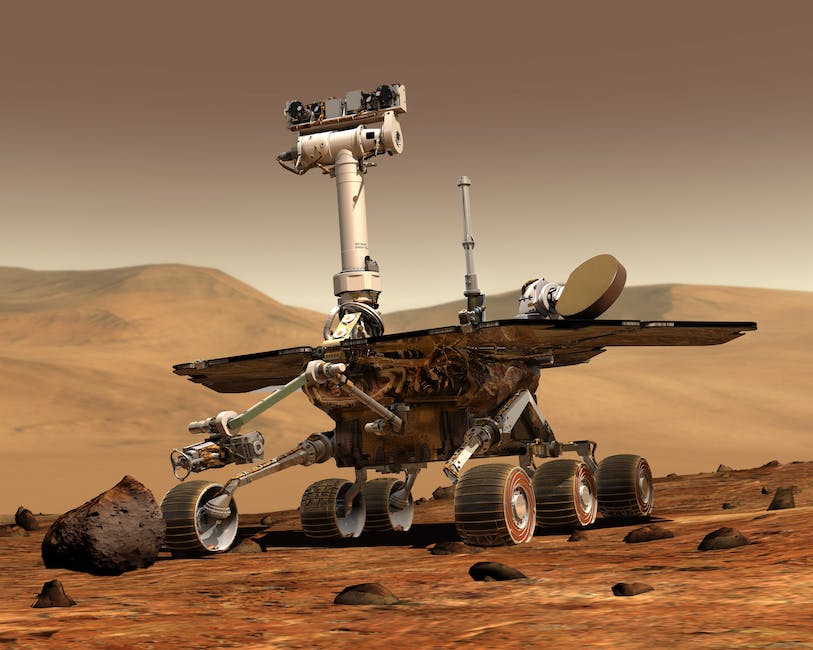Machine Learning, a cornerstone of modern artificial intelligence, is rapidly reshaping our world. Embracing a variety of sectors, from healthcare to finance, it’s no longer a futuristic concept but a present reality. This exploration will outline the fundamentals of machine learning, the key components involved, and how it distinguishes from deep learning. We will delve into its vast applications transforming diverse industries and look ahead to predict its prospective role in our everyday lives. Whether you are a novice or a declared tech enthusiast, this comprehensive journey promises to enhance your understanding and inspire you to envision the future possibilities.
Basics of Machine Learning
Introduction to Machine Learning
Machine Learning, often abbreviated as ML, is a subset of artificial intelligence (AI) that embodies the development of computer algorithms to improve automatically through experience and by the use of data. In simpler terms, ML is the ability of a system to learn from the environment and evolve without the requirement of explicit programming.
The fundamental premise of machine learning revolves around the concept of empowering machines to access data and enable them to use this data to learn for themselves. This learning process involves identifying patterns within this data and deciding or predicting the outcomes on their own. For instance, imagine this concept as learning to ride a bike or drive a car. Once you learn it, you don’t forget how to do it. Similarly, machines accumulate data and learn from the patterns they observe to provide the expected outcome.
Types of Machine Learning
Fundamentally, the machine learning field encapsulates three types of learning: Supervised learning, Unsupervised learning, and Reinforcement learning.
Supervised Learning
In Supervised Learning, machines learn from labeled data — data that is already known and paired with an output. The machine generates a model from the input-output pairs, and this model will then predict the outcome with calculated accuracy based on the newly input data. Supervised Learning is further divided into two categories, namely, Classification and Regression.
Unsupervised Learning
As the name suggests, Unsupervised Learning is a type of machine learning where machines are not supervised during the learning process. Instead, the machine is given a set of inputs without specified outputs. This model allows machines to find patterns and structures within the data. Unsupervised Learning is further divided into clustering and association problems.
Reinforcement Learning
This type of learning is based on the concept of ‘Trial and Error.’ The machine is set in an environment where it learns itself from its past experiences, taking into consideration both the mistakes and the correct choices made in the past. Its ultimate goal is to maximize the cumulative reward.
Exploring the Relevance of Machine Learning
In today’s digital era, Machine Learning is a dominant technology, showing a remarkable influence and impact. Its extensive range of practical applications includes prediction systems, speech recognition,tuning search engines, autonomous vehicles, gaming, email filtering, finance, healthcare, amongst others.
Let’s take a look at some real-world utilization:
- Google has harnessed machine learning for its search engine to enhance the precision of search results.
- Facebook leverages machine learning for image facial recognitions, posts recommendations, suggesting friends, and much more.
- Machine Learning is pivotal in email spam filtering, where it learns from the words present in spam emails to detect similar ones in future, thereby amplifying the filter’s efficiency.
As we venture deeper into this digital age, machine learning will increasingly cement its importance and influence. Besides driving technological innovation, it also ushers in transformative changes in our daily lives.

Photo by briankost on Unsplash
Components of Machine Learning
The Essence of Machine Learning
Machine learning falls under the broad umbrella of artificial intelligence (AI). It chiefly involves the creation of algorithms and statistical models, which are used by computers to perform tasks. These tasks are accomplished not through explicit instructions, but by relying on learned patterns and inferences. Therefore, the main components of machine learning include algorithms, training data, and the resultant outputs.
Understanding Algorithms
Algorithms are a set of rules or procedures that a machine follows to solve problems or complete tasks. They are the backbone of machine learning systems, dictating how they learn and adapt to new information.
Several types of algorithms may be employed, depending on the task and desired outcome. Some of these algorithm types include:
- Supervised learning algorithms: These models learn from labeled training data, and the algorithm attempts to predict outcomes based on that data.
- Unsupervised learning algorithms: These models learn from unlabeled data and seek to find structures and relationships within the data itself.
- Reinforcement learning algorithms: These models learn by interacting with their environment. Each action has a reward or penalty, guiding the algorithm towards optimal behavior.
The Role of Training Data
Training Data is the information supplied to the machine learning algorithms. It consists of examples or experiences that the algorithm can learn from. This data is presented to the model during the learning phase to create or train a predictive model or define baseline behavior.
The quality and volume of training data are paramount to the success of the machine learning process. Factors such as relevancy, comprehensiveness, and accuracy of the data can directly impact the ability of the model to make accurate predictions or define behavior.
Outputs and Their Significance
Outputs are the end results or predictions generated by the machine learning model. For instance, in a recommendation system, the output might be the products or services suggested to a user based on their past behaviors and preferences.
It is crucial to evaluate and validate these outputs continually to ensure the accuracy and effectiveness of the model. This evaluation often involves using separate testing data unseen by the model during its training phase. Metrics such as accuracy, precision, recall, or F1-score are used to measure the model’s performance.
Interplay of Machine Learning Components
In machine learning, there is a significant interplay between algorithms, training data, and outputs. Each component influences the others; the choice of algorithm dictates the nature of required training data and the form of the output. Similarly, the quality and characteristics of training data have a strong impact on the output’s accuracy and effectiveness. Furthermore, the interpretation and evaluation of these outputs feed back into the system, potentially influencing both the algorithm selection and the training data. This iterative process fuels the continuous evolution and enhancement of machine learning models.
The synergy within this triad, when understood and refined, can unlock unprecedented capabilities. Machine learning boasts potential for innovation across a spectrum of fields, including but not limited to healthcare, finance, and ecommerce.

Machine Learning Applications
Unleashing Innovations with Machine Learning
Machine learning, a powerful subset of artificial intelligence, equips systems the capacity to learn and self-improve from data, sidestepping the need for explicit programming. It encapsulates the art and science of creating computational models equipped to self-learn and adapt when introduced to new data. This ability to learn and adjust is the driving force behind the wave of innovation sweeping across industries such as healthcare, finance, retail, and transportation. The pulse of machine learning beats the rhythm of dynamic progress and technological advancement.
Machine Learning Application in Healthcare
The use of machine learning in healthcare has paved the way for significant advancements. One of the primary applications includes disease detection and diagnosis. Machine learning algorithms can study patterns and trends in vast datasets of patient records to predict, analyze, and diagnose diseases and ailments that may be otherwise unobvious to humans.
Besides, machine learning is also playing a vital role in drug discovery. By using machine learning algorithms, scientists can streamline drug discovery and testing by predicting how molecules will behave and how drugs will interact with each other.
Machine Learning Applications in Finance
In the finance industry, machine learning is used to detect fraudulent transactions and activities. Machine learning algorithms can study and learn from previous transactions data to predict or identify suspicious activities that could potentially lead to a security breach.
Machine learning is also used in algorithmic trading. Algorithmic trading involves using complex AI systems to make trading decisions at speeds several orders of magnitude greater than any human is capable of, predicting market patterns and executing trades rapidly.
Machine Learning Applications in Retail
The retail industry is leveraging machine learning to drive customer engagement and increase sales. For instance, machine learning can be used for personalized product recommendations. By studying individual customer data and buying patterns, machine learning algorithms can predict products that a customer is likely to purchase.
Machine learning is also being used for demand forecasting in retail. With machine learning, retailers can analyze historical sales data to predict future sales trends and accurately plan their inventory to avoid overstocks and outages.
Machine Learning Applications in Transportation
In the transportation industry, machine learning is being used to predict traffic conditions and optimize routes. By analyzing historical traffic data, weather conditions, and other factors, machine learning algorithms can predict traffic congestion and suggest the quickest routes to drivers.
Also, machine learning plays a vital role in autonomous vehicles. Machine learning models help self-driving cars to recognize objects, perform actions, and make decisions based on the inputs from their surroundings.
Wrapping Up
The applications of machine learning are not confined to a single sector; instead, they’re fuelling innovation across a variety of industries. From healthcare to finance and from retail to autonomous cars, machine learning is enabling enhanced performance and revolutionary changes. This technology, with its continuous evolution, is poised to usher in groundbreaking shifts in diverse fields.

Machine Learning vs Deep Learning
Delving Deeper: Understanding Machine Learning and Deep Learning
Machine Learning and Deep Learning are two significant subsets of artificial intelligence (AI) that deal with educating machines to learn and make independent decisions. While both rely on experiential learning, they vary in terms of the complexity and depth of their learning processes.
Machine Learning
Machine Learning is a type of AI that gives computers the ability to learn without being explicitly programmed. It uses algorithms to parse data, learn from it, and then make predictions or decisions without human intervention. For instance, machine learning powers recommendation systems like those on Netflix or Amazon, which analyze user behaviour and suggest products or shows users might like.
Machine Learning is only capable of performing specific tasks and its learning is also restricted. In other words, machine learning algorithms learn from and make decisions based on data. It’s still a powerful tool, but it doesn’t have the adaptability and depth of learning that Deep Learning has.
Deep Learning
Deep Learning, a subset of Machine Learning, is inspired by the structure and function of the human brain, specifically utilized for processing data and creating patterns. With Deep Learning, algorithms are designed to mimic the human brain’s way of thinking, hence are called artificial neural networks.
Deep Learning does not require human intervention, unlike Machine Learning. Instead, it learns from massive amounts of data. As more data is fed into the neural network, the accuracy of predictions improves. For instance, Google uses Deep Learning to recognize images in Google Photos and to power the voice assistant in every Android smartphone.
Application and Practicality
While both Machine Learning and Deep Learning have various practical uses, the nature of these applications differ based on the capabilities of the two technologies. Machine Learning is widely applied in areas such as recommender systems, credit card fraud detection, and email spam filtering. Meanwhile, Deep Learning is gaining popularity in areas such as digital assistant solutions, automatic language translation, and self-driving cars.
Strengths and Limitations
Machine Learning’s primary strength lies in its simplicity and efficiency. It is easier to understand, program, and control than Deep Learning and is often sufficient enough for relatively simple applications. Its limitations, however, include the need for human intervention in selecting relevant features in the data and the inability to process larger, more complex sets of data.
On the other hand, Deep Learning’s strength lies in its ability to process larger and more complex sets of data, the accuracy of which improves over time. It excels in areas where the solution hinges on recognizing complex patterns or behaviour. However, the limitations of Deep Learning include its demanding nature in terms of computational power and the complexities associated with programming and controlling deep learning models.
Final Thoughts
AI is a rapidly evolving field, with Machine Learning and Deep Learning acting as its crucial drivers. These two algorithms have distinct strengths and limitations, making it essential to choose wisely based on the challenges and data complexity at hand.

Future of Machine Learning
Exploring Machine Learning
Machine Learning, an integral part of AI, is centered around creating algorithms and statistical models that empower computers to carry out tasks without explicit programming. Essentially, these algorithms rely on computational methods to absorb information from data, enriching the learning process through accumulated experience.
Future Role of Machine Learning in Our Everyday Lives
Machine Learning is poised to play an integral role in our everyday lives. This integration will happen in various forms, ranging from voice assistants like Siri and Alexa to predictive typing in our smartphones. ML will also play a substantial role in healthcare by aiding in disease diagnosis and predicting patient’s health status based on their medical history.
In the field of transportation, machine learning could revolutionize the way we travel by making self-driving cars a norm. AI-powered vehicles rely heavily on machine learning algorithms to navigate, avoid obstacles, and predict potential hazards on the road, thereby ensuring safe journeys.
ML technology will also reshape the retail industry, from personalization of customer experiences to inventory management. Retailers will use ML to predict buying patterns, preferences, and tastes of their consumers, leading to highly personalized shopping experiences.
Imminent Breakthroughs in Machine Learning
Although Machine Learning already has a broad range of applications, imminent breakthroughs will thrust this technology further into previously uncharted territories. Deep Learning, a sub-field of machine learning, could lead to significant advancements in technology, such as improving the capability of systems to understand and respond to natural language inputs.
Quantum Machine Learning, another imminent breakthrough, combines ML and Quantum Physics for faster data processing and superior performance. This technology could potentially revolutionize sectors such as healthcare and climate modeling by solving complex problems with unprecedented efficiency.
Challenges in Machine Learning
Despite the numerous potential benefits, Machine Learning also poses a few challenges. One of the most pressing concerns involves data privacy and security. With increasing reliance on ML algorithms to handle sensitive data, the risk of data breaches and misuse also escalates.
Additionally, there are concerns over job losses as ML takes over tasks traditionally performed by humans. Resulting structural changes in the job market may necessitate extensive retraining and education.
Creating unbiased ML algorithms is also a challenge. If the data fed into ML algorithms reflects existing biases, the machines will merely enhance and perpetuate these biases, leading to unfair and discriminatory practices.
The Social, Economic, and Ethical Implications of Machine Learning
Machine Learning will significantly affect the social, economic, and ethical dimensions of society. At the social level, there are concerns about privacy. Machine Learning systems thrive on vast data, raising questions about who has access to this information and how it is used.
In terms of economy, while ML can improve business efficiencies and boost economic growth, it can potentially cause job displacement and increase income disparity.
Ethically, the use of Machine Learning raises questions about accountability. When an AI system makes a mistake, who is responsible for the fallout, especially when the results are catastrophic?
As society continues to tackle these challenges, it is evident that the future of Machine Learning looks promising, albeit with hurdles. As we advance in understanding and enhancing this technology, we must also keep a careful eye on the corresponding social, economic, and ethical implications.

Machine Learning is a potent force, already infusing our lives with considerable enhancements and offering immense potential for the future. Its evolving journey is exciting yet difficult, raising questions about the societal, economic, and ethical implications of this transformative technology. Yet, it is undeniably igniting a revolution, harnessing data to learn, adapt and predict in ways we once only dreamed of. As we continually grapple with the implications and navigate the complexities, the role of machine learning continues to intensify and expand. Hence, we ought to stay informed, engaged, and ready to harness its power responsibly.

